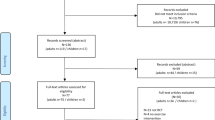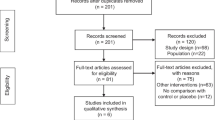Abstract
The aim of this study was to evaluate the short, medium and long–term effects of peripheral repetitive magnetic stimulation (rMS) on myofascial pain compared with transcutaneous electrical nerve stimulation (TENS).
Fifty–three subjects with myofascial trigger points (TPs) at the level of the superior trapezius muscle were allocated randomly to three groups. The first group (n = 17) was treated with rMS, the second (n = 18) with TENS and the third (n = 18) received a placebo treatment. Each treatment consisted of ten daily 20–minute sessions. Patients were evaluated before and immediately following treatment, and at one and three months after the end of treatment. Outcome measures were: the “neck pain and disability visual analogue scale” (NPDVAS), an algometric evaluation of pain, an evaluation of the TP characteristics, and the range of cervical bending and rotation contralateral to the affected trapezius muscle.
At the end of treatment, the rMS group showed a significant improvement in the NPDVAS, algometry, TP characteristics, and cervical contralateral rotation. This improvement also persisted at one and three months post–therapy. After treatment, the TENS group showed significant improvement in the same outcome measures except for algometry. At the one month follow–up visit, this improvement had returned to non significant levels in all outcome measures with the exception of NPDVAS.
No significant effect of TENS was seen at the three–month follow–up visit. The placebo group showed no significant improvement in any measure.
Our results strongly suggest that at medium and longer term intervals peripheral rMS may be more effective than TENS for the treatment of myofascial pain.
Similar content being viewed by others
References
Barker AT, Freeston IL, Jalinous R, Jarratt JA (1987) Magnetic stimulation of the human brain and peripheral nervous system: an introduction and the results of an initial clinical evaluation. Neurosurgery 20:100–109
Binder A, Graham P, Hazleman B (1984) Pulsed electromagnetic field therapy of persistent rotator cuff tendinitis. Lancet 1:695–698
Bryant TN, Machin D (1997) Statistical methods. In:Wilson BA, McLellan DL (eds) Rehabilitation Studies Handbook. Cambridge University Press, Cambridge
Chee EK, Walton H (1986) Treatment of trigger points with microamperage transcutaneous electrical nerve stimulation (TENS). J Manipulative Physiol Ther 9:131–134
Chibnall JT, Duckro PN, Baumer K (1994) The influence of body size on linear measurements used to reflect cervical range of motion. Phys Ther 74:1134–1137
Clarkson HM, Gilewich GB (1989) Musculoskeletal assessment. Joint range of motion and manual muscle strength. Williams and Wilkins, Baltimore
Cohen D, Cuffin BN (1991) Developing a more focal magnetic stimulator. Part I: Some basic principles. J Clin Neurophysiol 8:102–111
DuPont JS Jr, Graham R, Tidwell JB (1999) Trigger point identification and treatment with microcurrent. Cranio 17:293–296
Esenyel M, Caglar N, Aldemir T (2000) Treatment of myofascial pain. Am J Phys Med Rehabil 79:48–52
Ferrari M, Piro MT (1983) La magnetoterapia. Recenti Prog Med 74:1090–1092
Fischer AA (1988) Documentation of myofascial trigger points. Arch Phys Med Rehabil 69:266–291
Gam AN, Warming S, Larsen LH, Jensen B, Høydalsmo O, Allon I, Andersen B, Gøtzche NE, Petersen M, Mathiesen B (1998) Treatment of myofascial trigger points with ultrasound combined with massage and exercise – a randomized controlled trial. Pain 77:73–79
Graff-Radford SB, Reeves JL, Baker RL, Chiu D (1989) Effects of transcutaneous electrical nerve stimulation on myofascial pain and trigger point sensitivity. Pain 37:1–5
Han SC, Harrison P (1997) Myofascial pain syndrome and trigger-point management. Reg Anesth 22:89–101
Heldmann B, Kerkhoff G, Struppler A, Havel P, Jahn T (2000) Repetitive peripheral magnetic stimulation alleviates tactile extinction. Neuroreport 11:3193–3198
Hoheisel U, Mense S, Simons DG, Yu XM (1993) Appearance of new receptive fields in rat dorsal horn neurons following noxious stimulation of skeletal muscle: a model for referral of muscle pain? Neurosci Letters 153:9–12
Hong CZ, Hsueh TC (1996) Difference in pain relief after trigger point injections in myofascial pain patients with and without fibromyalgia. Arch Phys Med Rehabil 77:1161–1166
Hou CR, Tsai LC, Cheng KF, Chung KV, Hong CZ (2002) Immediate effects of various physical therapeutic modalities on cervical myofascial pain and trigger-point sensitivity. Arch Phys Med Rehabil 83:1406–1414
Hsueh TC, Cheng PT, Kuan TS, Hong CZ (1997) The immediate effectiveness of electrical nerve stimulation and electrical muscle stimulation on myofascial trigger points. Am J Phys Med Rehabil 76:471–476
Kovačević-Ristanović R, Cartwright RD, Lloyd S (1991) Nonpharmacologic treatment of periodic leg movements in sleep. Arch Phys Med Rehabil 72:385–389
Melzack R, Wall PD (1965) Pain mechanisms: a new theory. Science 150:971–979
Mense S (1993) Nociception from skeletal muscle in relation to clinical muscle pain. Pain 54:241–289
Mense S, Simons DG, Russel IJ (2001) Muscle Pain: understanding its nature, diagnosis, and treatment. Williams and Wilkins, Philadelphia
Paradiso M, Scotti R, Pera P (1989) Valutazione dell’efficacia clinica dell’EMG biofeedback sul rilasciamento muscolare e sulla sintomatologia dolorosa. Minerva Stomatol 38:19–22
Porta M, Perretti A, Gamba M, Luccarelli G, Fornari M (1998) The rationale and results of treating muscle spasm and myofascial syndromes with botulinum toxin type A. Pain Digest 8:346–352
Pujol J, Pascual-Leone A, Doltz C, Delgado E, Doltz JL, Aldomà J (1998) The effect of repetitive magnetic stimulation on localized musculoskeletal pain. Neuroreport 9:1745–1748
Raj PP (1998) Diagnosis and management of fibromyalgia and myofascial pain syndrome. Pain Digest 8:357–363
Ridding MC, Brouwer B, Miles TS, Pitcher JB, Thompson PD (2000) Changes in muscle responses to stimulation of the motor cortex induced by peripheral nerve stimulation in human subjects. Exp Brain Res 131:135–143
Rothwell JC, Thompson PD, Day BL, Boyd S, Marsden CD (1991) Stimulation of the human motor cortex through the scalp. Exp Physiol 76:159–200
Simons DG (1996) Clinical and etiological update of myofascial pain from trigger points. J Musculoskel Pain 4:93–121
Simons DG, Hong CZ, Simons LS (2002) Endplate potentials are common to midfiber myofascial trigger points. Am J Phys Med Rehabil 81:212–222
Simons DG (2003) Myofascial pain syndromes – Trigger points. J Musculoskel Pain 11:45–52
Simons DG, Travell JG, Simons LS (1999) Travell and Simons’Myofascial pain and dysfunction: The trigger point manual,Vol. 1, Ed. 2. Williams and Wilkins, Baltimore
Smania N, Corato E, Fiaschi A, Pietropoli P, Aglioti SM, Tinazzi M (2003) Therapeutic effects of peripheral repetitive magnetic stimulation on myofascial pain syndrome. Clin Neurophysiol 114:350–358
Stanton-Hicks M, Salamon J (1997) Stimulation of the central and peripheral nervous system for the control of pain. J Clin Neurophysiol 14:46–62
Testa M, Barbero M, Gherlone E (2003) Trigger points.Update of the clinical aspects. Eur Med Phys 39:37–43
Travell JG, Simons DG (1983) Myofascial pain and dysfunction. The trigger points manual – The upper parts of the body. Williams and Wilkins, Baltimore
Trock DH, Bollet AJ, Markoll R (1994) The effect of pulsed electromagnetic fields in the treatment of osteoarthritis of the knee and cervical spine. Report of randomized, double blind, placebo controlled trials. J Rheumatol 21:1903–1911
Walsh DM, Foster NE, Baxter GD, Allen JM (1995) Transcutaneous electrical nerve stimulation. Relevance of stimulation parameters to neurophysiological and hypoalgesic effects. Am J Phys Med Rehabil 74:199–206
Wheeler AH, Goolkasias P, Gretz SS (1998) A randomized, double-blind, prospective pilot study of botulinum toxin injection for refractory, unilateral, cervicothoracic, paraspinal, myofascial pain syndrome. Spine 23:1662–1667
Author information
Authors and Affiliations
Corresponding author
Additional information
The study was performed in the Centro di Rieducazione Funzionale of the Policlinico G. B. Rossi; Verona, Italy.
Rights and permissions
About this article
Cite this article
Smania, N., Corato, E., Fiaschi, A. et al. Repetitive magnetic stimulation A novel therapeutic approach for myofascial pain syndrome. J Neurol 252, 307–314 (2005). https://doi.org/10.1007/s00415-005-0642-1
Received:
Revised:
Accepted:
Published:
Issue Date:
DOI: https://doi.org/10.1007/s00415-005-0642-1




